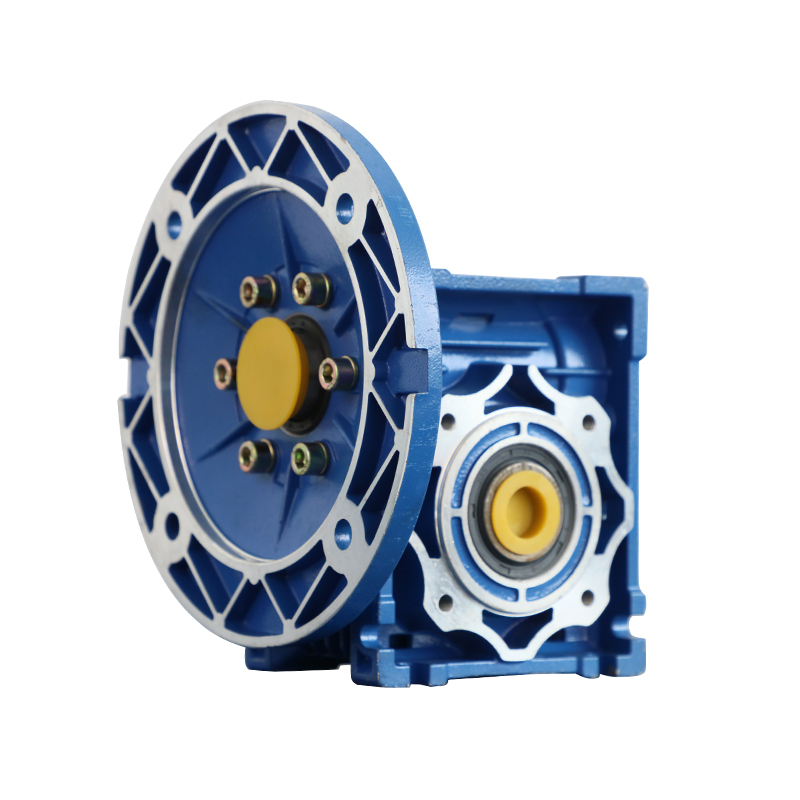The RV worm gear reducer is widely used in various mechanical and industrial applications, particularly in automation systems, robotics, packaging machinery, and CNC equipment. One of the most important aspects of a gear reducer is its ability to transmit torque efficiently and consistently. So, the question arises: Is the torque transmission of the RV worm gear reducer stable? The answer is yes — and here's why.
What Is an RV Worm Gear Reducer?
An RV worm gear reducer is a type of gear system that uses a worm (a screwlike shaft) meshed with a worm wheel (a gear). The RV (Rotary Vector) reducer is typically compact and designed to deliver high torque output with precise motion control, especially under highload conditions. It’s known for its excellent performance in applications where space, precision, and torque density matter.
Unlike simple worm gearboxes, RV reducers often use a double reduction mechanism, combining planetary gears and worm gears for improved torque handling and higher efficiency.
Why Torque Stability Matters
Torque stability is critical in mechanical systems. It ensures:
Smooth operation: Consistent torque reduces vibrations and irregular movement.
Precision control: Especially important in robotics and CNC machines where exact motion is required.
Mechanical safety: Fluctuating torque can damage connected components or lead to breakdowns.
Extended service life: Stable transmission reduces wear and tear on gears and bearings.
In short, stable torque transmission improves reliability and performance.
Key Features That Support Stable Torque in RV Worm Gear Reducers
Several design characteristics of RV worm gear reducers contribute to their torque stability:
1. High Gear Contact Ratio
The worm and worm wheel in RV reducers have a large contact surface area. This helps distribute the torque load more evenly across the gears, reducing pressure on any single point and ensuring consistent torque delivery.
2. Builtin Double Reduction Mechanism
Many RV gear reducers feature a twostage reduction system — combining a cycloidal or planetary input stage with a worm gear output. This structure not only increases the torque output but also minimizes backlash and enhances stability during load changes.
3. Minimal Backlash
RV reducers are designed to have extremely low backlash (the play between meshing gears). Low backlash ensures that when the system reverses or changes direction, the torque is transmitted immediately without delay or slippage. This is essential for applications requiring high positioning accuracy.
4. High Rigidity and Load Capacity
The robust housing and internal gear structure allow RV reducers to handle high radial and axial loads. This strength contributes to maintaining torque consistency even when external forces are applied or the load fluctuates.
5. Precision Machining and Tight Tolerances
Modern RV reducers are manufactured with advanced CNC and heat treatment technologies, ensuring precise gear alignment and durable gear tooth profiles. These factors play a major role in stable torque transfer, even under continuous or variable workloads.
Performance Under Variable Loads
RV worm gear reducers are especially wellsuited for environments where load conditions change rapidly. For example, in robotic arms or pickandplace machinery, the gear reducer must handle varying torque demands while maintaining speed and positional accuracy.
Thanks to their design and construction, RV reducers respond effectively to such load variations. The transmission remains stable because the gear structure resists deformation and maintains smooth engagement between moving parts.
Comparison with Other Gear Reducers
Compared to traditional worm gearboxes or simple planetary gear systems, RV worm gear reducers typically offer:
Better torque density (more torque in a smaller package)
Improved thermal stability (less overheating under load)
Greater vibration damping (due to the meshing structure)
Superior longterm performance stability
These advantages make RV gear reducers the preferred choice in highprecision or heavyload applications.
Maintenance and LongTerm Stability
Another benefit that supports torque consistency is that RV gear reducers generally require low maintenance. With proper lubrication and regular inspection, the gears retain their performance for long operational lifespans. Less wear and degradation over time mean torque transmission remains stable for years, even in demanding industrial settings.
Yes, the torque transmission of the RV worm gear reducer is highly stable. Thanks to its advanced internal structure, high gear contact ratio, minimal backlash, and robust build, it delivers smooth and reliable torque under a wide range of operating conditions.
Whether in robotics, automation, or CNC machinery, the RV reducer ensures consistent performance, precise control, and longterm durability. For any application where stable torque is essential, the RV worm gear reducer stands out as a topperforming solution.


 English
English русский
русский bahasa Indonesia
bahasa Indonesia
